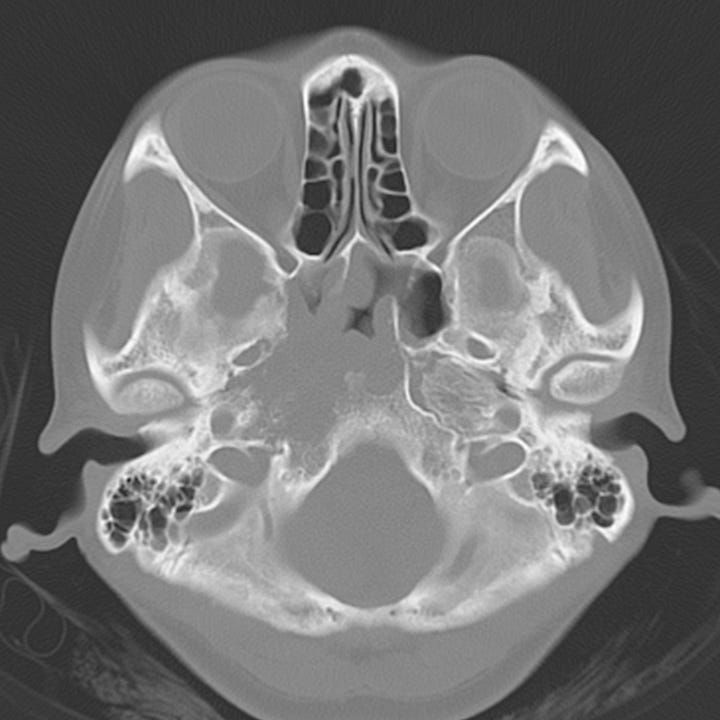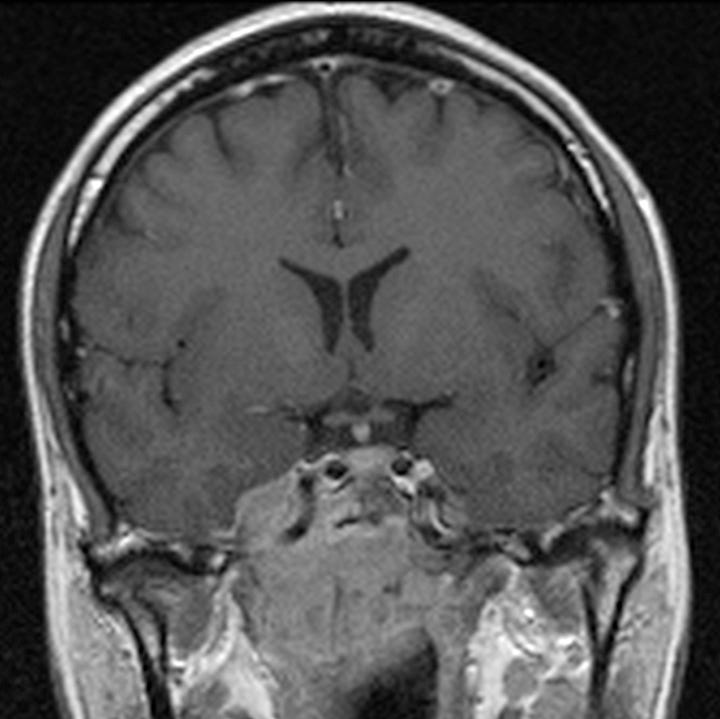Nasopharyngeal carcinoma is the most common malignancy of the nasopharynx. It is a squamous cell carcinoma of multifactorial etiology including Epstein-Barr virus (EBV) infection, smoking, genetic predisposition and diet. It is rare in western Europe and the United states but endemic in Asia, especially southern China. The peak incidence is in the sixth decade with men more commonly affected than women.
The primary tumor is usually located in the fossa of Rosenmüller, near the orifice of the eustachian tube. By compromising middle ear drainage, nasopharyngeal carcinomas can present with otitis media and conductive hearing loss. Skull base invasion may result in CNII-VI neuropathy. Cervical adenopathy is frequently seen at time of diagnosis and is due to local metastatic disease.


Nasopharyngeal carcinoma. A right sided soft tissue mass has eroded the petrous apex, right lateral clivus, and right lateral sphenoid sinus. Coronal postgadolinium T1-weighted image shows the large, enhancing right nasopharyngeal mass invading the clivus and right cavernous sinus and encasing the right cavernous internal carotid artery.
Presenting findings include serious otitis media/middle ear effusion, nasal obstruction, epistaxis, or cranial nerve dysfunction. Nasopharyngeal carcinoma should be considered in any adult who presents with a first episode of otitis media.
CT and MR imaging characterize the primary mass and local nodal metastases, which are present in more than half of patients at diagnosis. Tumor can extend to invade the skull base and cranium via the eustachian tube, clivus, or neuroforamina. Distant metastases are usually found in the bone, liver and lung.
Primary treatment is external-beam radiation therapy, which may be supplemented with chemotherapy.



